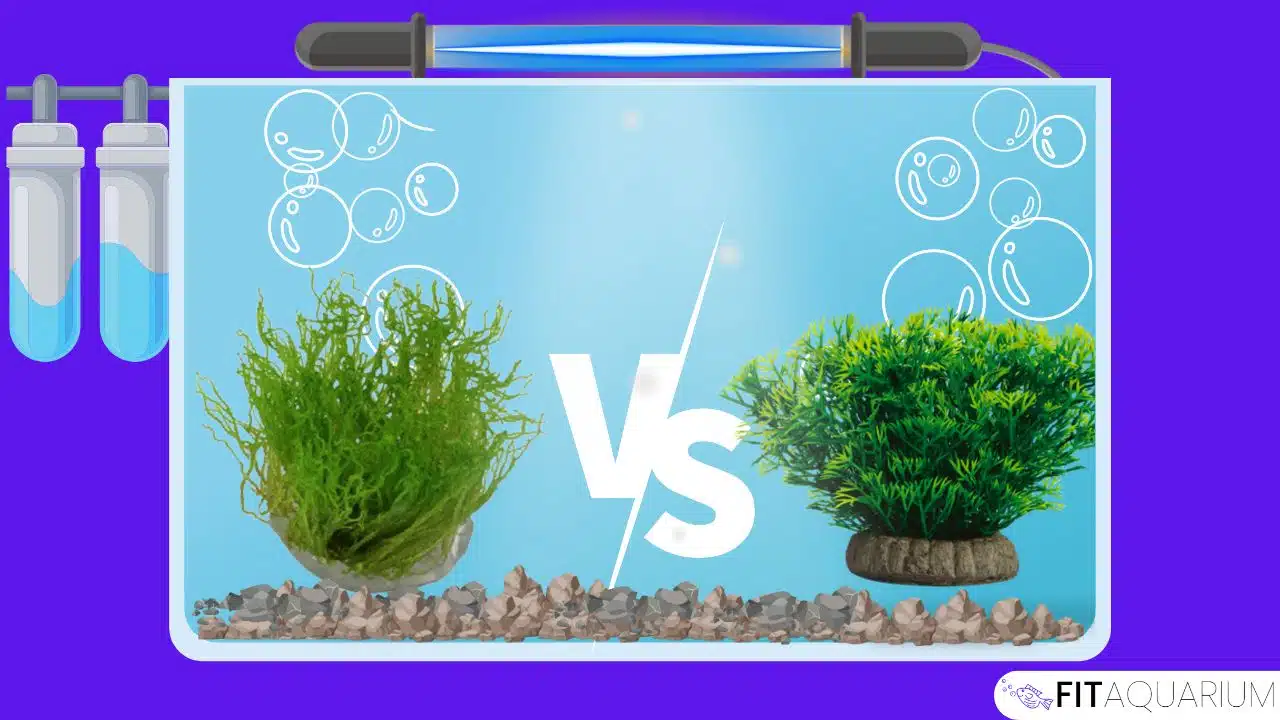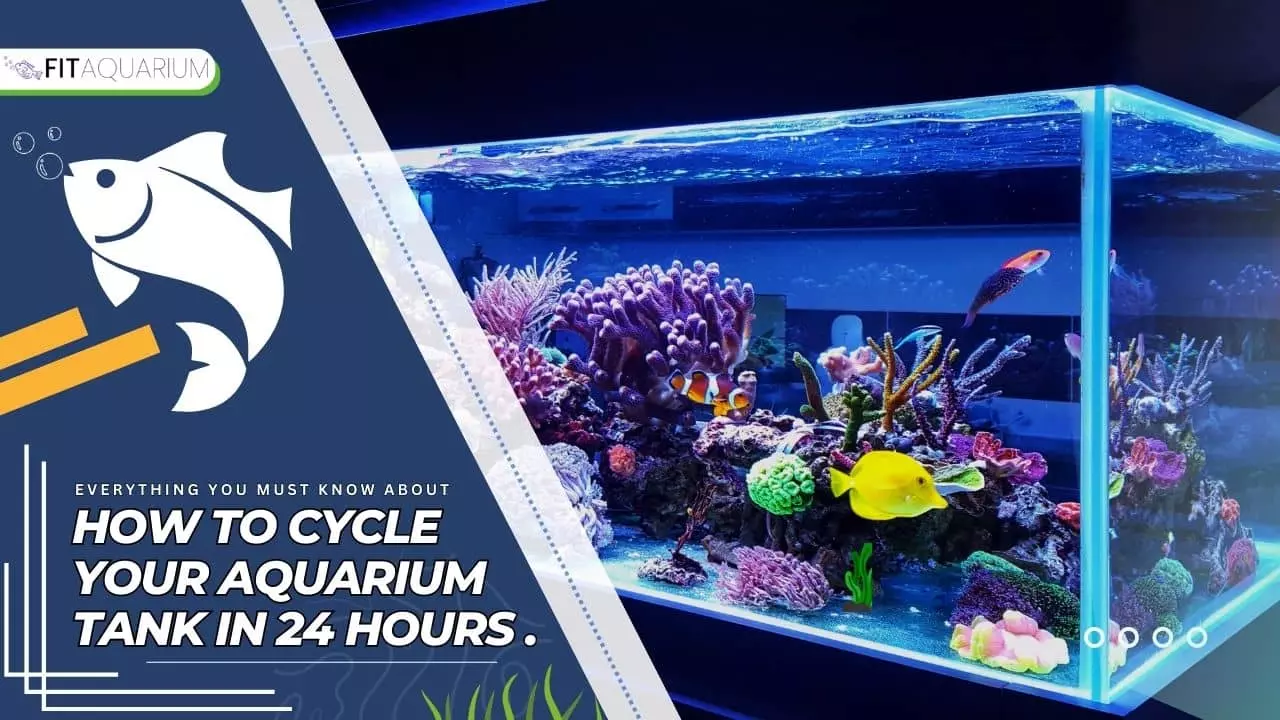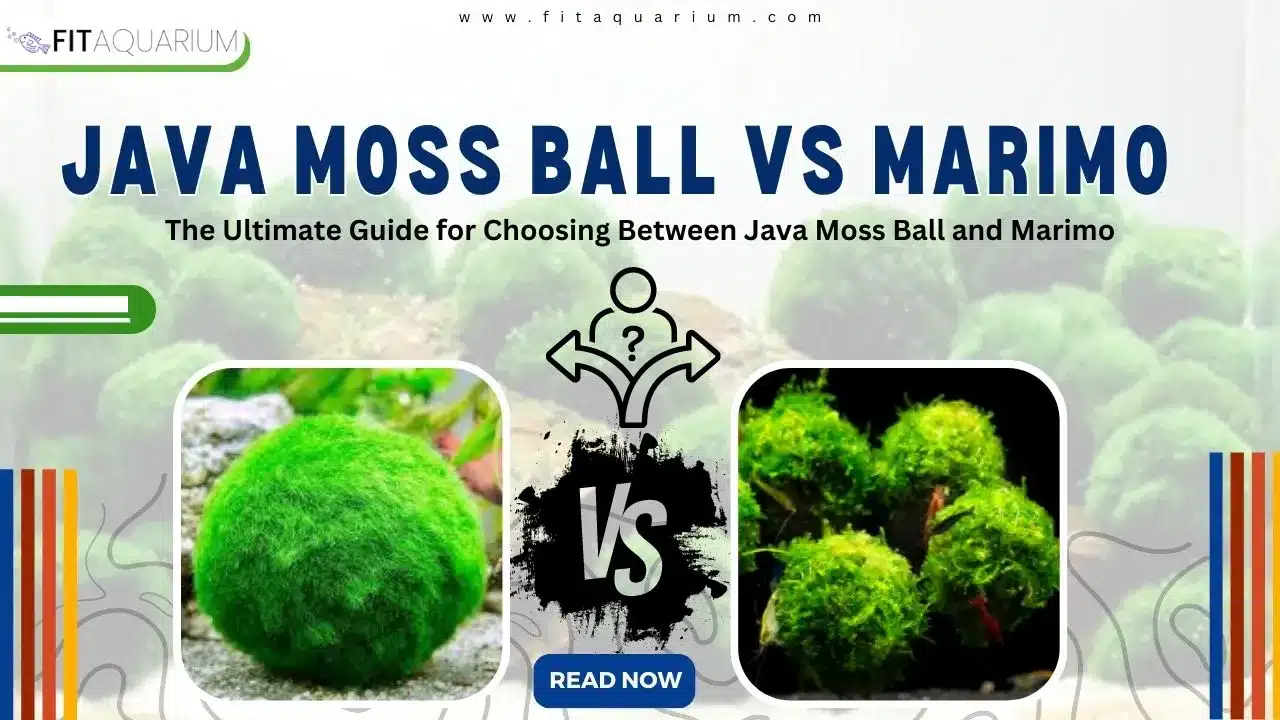One of the boundless blessings of nature is that it has bestowed the ocean’s depths with an incredible array of aquatic creatures. Regal angelfish – Pygoplites Diacanthus is one of this multitude. It is among the most majestic additions to the submerged world.
On the basis of diverse origins, it has many variations in complexion, contributing to its tremendously endearing look. However, this elegant creature demands special care and attention from aquarium enthusiasts to meet its royal needs.
Let’s delve into the various aspects including facts, tips, and techniques about ‘Regal angelfish care,’ where I’ll reveal the mysteries of this marine king.
Scientific and Common Names of Regal Angelfish
The regal angelfish belongs to the Pomacanthidae family and is the sole member of the genus Pygoplites, making Pygoplites a monotypic genus. Earlier it was included in the Chaetodon genus. That’s why its scientific names were Chaetodon dicanthus and Holacanthus dicanthus in the past. Currently, the scientific name of Regal Angelfish is Pygoplites diacanthus.
Apart from Regal angelfish, it is also known by many other names, including Royal Angelfish, Empress Angelfish, Royal Empress Angel, and Blue Banded Angelfish.
Why Regal Angelfish is Popular among Aquarists?
The majestic Regal Angelfish has captured the hearts of aquarists all around the world with its stunning beauty and elegant manner. Let’s explore why aquarists find this royal beauty so appealing now:
- Beautiful Coloration: The Regal Angelfish’s captivating color scheme of vivid yellows, deep blues, and contrasting blacks makes for an eye-catching show in any aquarium.
- Distinctive Appearance: The Regal Angelfish is a unique and stunning species, highlighted by its circular body shape, elongated dorsal fin, and bright vertical stripes.
- Limited Distribution: Majorly, the Indian and Pacific Oceans are the Regal Angelfish’s natural habitats. Collectors find it valuable because of its limited distribution, which gives it an air of uniqueness.
- Aesthetic Grace: The Regal Angelfish is a living piece of art in aquariums because, despite its striking colors and distinctive markings, it moves with a certain grace and elegance that captivates viewers as it smoothly glides through the water.
Physical Appearance
The Regal Angelfish is among the most captivating and attractive species among marine angels. It is adorned with vibrant colors. Their coloration varies based on their origin and we will discuss their habitat-specified color later in this article in the habitat section of Regal Angelfish.
An adult Regal Angelfish usually reaches about a medium-sized fish, measuring approximately 8-12 inches in length.
Regal Angelfish Habitat
Regal angelfish was first formally described by Boddaert in his book Elenchus Animalium, where he gave it the name Chaetodon Diacanthus. The Great Barrier Reef, the Tuamoto Islands, and the Ogasawara Islands serve as their habitats, where the warm waters of the Pacific and Indian oceans are the two major habitats of the Regal Angelfish. Their color variations occur from place to place.
![Regal Angelfish Care 101: [A Comprehensive Guide] Regal angelfish habitat](https://fitaquarium.com/wp-content/uploads/2024/01/Regal-Angelfish-Habitat.webp)
The fish can find shelter and food in the diverse coral-rich settings that make up its natural habitat. The species can be found in depths of up to 45 meters and is frequently linked to reef formations.
Now let me explain to you the two major variants of Regal Angelfish depending on their habitat i.e. The Indian Ocean Species and The Indo Pacific Species
Indian Ocean Species
The coral reefs of the Andaman Sea, Comoros, and the Maldives are home to the majestic angelfish in the Indian Ocean. These areas offer a variety of marine life and an abundance of coral formations, which make them the perfect habitat for angelfish.
Regal Angelfish from the Indian Ocean, including the Red Sea, are highly esteemed for their vibrant coloration. The breast and head coloration of these fish from the Indian Ocean is a striking yellow.
The Indo-Pacific Species
The Great Barrier Reef in Australia, Fiji, and Indonesian waters are home to the Regal Angelfish over the vast waters of the Indo-Pacific region. This species’ distribution throughout the Indo-Pacific area can be attributed to its adaptation to a variety of reef environments.
On the other hand, Regal Angelfish from the Pacific Ocean typically have a blue/gray colored breast and head.
Growth Rate
The growth rate of the royal angelfish is one of its key characteristics. Like many other marine creatures, regal angelfish go through several stages of growth. Understanding the size of an adult regal angelfish helps you to develop an appropriate tank arrangement.
The size of the angelfish varies under its developmental stage. They grow very quickly as juveniles, according to the environment, and reach lengths of 2 to 3 inches. Those tiny baby angelfish need to be fed correctly during this time to stay healthy.
Their physical growth rate slows down as they get older, and they eventually reach their typical size of 6 to 8 inches.
The maximum approached size that an adult royal empress angel can attain is about 9 to 12 inches (22-30 cm).
Pro Tip: A large aquarium is always recommended to accommodate their size and let them swim freely without feeling confined.
Regal Angelfish Average Lifespan
Regal Angelfish can live for an average of 10 to 15 years when housed in a well-maintained aquarium. These magnificent animals are prized inhabitants of marine aquariums because they can add grace and beauty to underwater settings for extended periods.
Factors Affecting the Lifespan of Regal Angelfish
These are a few factors to consider if you want to live the longest possible life for your regal angelfish.
- Quality of Living Conditions
- Stable Water Parameters (Temperature and Salinity)
- Nutritious and Varied Diet
- Minimization of Stress Factors (e.g., sudden environmental changes, aggressive tank mates)
Regal Angelfish Tank Mates
![Regal Angelfish Care 101: [A Comprehensive Guide] Regal angelfish tank mates](https://fitaquarium.com/wp-content/uploads/2024/01/Regal-Angelfish-Tank-Mates.webp)
For your aquarium to be balanced overall, choosing suitable aquarium mates is essential. Despite their inherent shyness, regal angelfish can be quite aggressive with other fish, especially in the beginning. It should not be added with anything larger in size or quick-feeding aquatic creatures, as it is readily disturbed by them.
Pro Tip: Selecting tank mates with similar necessities and traits helps maintain a healthy aquatic community.
So without further due, let’s explore the best and worst tankmates for our beauties.
Suitable Tank Mates for Regal Angelfish
Gentile and non-aggressive tank companions are ideal for the flourishing of Regal Angelfish. Other reef-safe species with matching temperaments and environmental needs make ideal partners.
- Anthias
- Butterflyfish
- Other friendly angelfish species
These friends enhance your aquarium’s overall appearance by supporting a peaceful underwater community.
Worst Tank Mates for Regal Angelfish
Regal Angelfish should not be kept in tanks with aggressive or harsh tankmates. It is best to keep species that are known to fight, like large predatory fish or aggressive angelfish, apart. Territorial species that might invade the angelfish’s territory or fight with it for resources should also be kept out. Some specific names are
- Triggers and Large Wraces
- Lionfish and Damselfish
- Clownfish and Dwarf fish ( Unless your tank is hundreds of gallons)
The Regal Angelfish can only flourish in a relaxed and friendly atmosphere, so choosing tank mates with care is essential.
Is Regal Angelfish Reef Safe?
Reef tank compatibility with the Regal Angelfish can be a little tricky. Raising them in reef tanks has been successful for some aquarists, but it appears to depend on the particular circumstances and the kinds of corals already available in tanks.
![Regal Angelfish Care 101: [A Comprehensive Guide] Is regal angelfish reef safe](https://fitaquarium.com/wp-content/uploads/2024/01/Is-Regal-Angelfish-Reef-Safe.webp)
Though proceed with caution, royal angelfish are thought to be reasonably safe around reefs. They have been reported to leave SPS corals alone, however zoanthids and certain soft corals may be endangered. Larger angels have also been observed to consume pieces of SPS coral.
But it’s crucial to keep in mind that every fish is unique and that what works in one aquarium cannot work in another. It is advised to keep a careful eye on the behavior of any Regal Angelfish you are thinking of adding to your reef tank and to be ready to make any necessary adjustments.
You may want to look into species from the Genicanthus family, such as Bellus, Watanabei, Masked, Swallowtail, and Lamark if you’re searching for an angelfish that is ideal for reef environments. Reef tanks are typically thought to be safe for these species.
Aquarium Requirements
To ensure the optimal health and well-being of your Regal Angelfish, it is important to take into consideration some aspects when establishing their perfect aquarium arrangement. Giving these elegant marine creatures the proper conditions is crucial. If you attend to a certain crucial tank requirement, your Regal Angelfish will thrive and live an extended life span in your aquarium.
- Tank Size
An aquarium tank provides an appropriate ecosystem for the aquatic creatures in it. So, its size always matters to the aquatic companions. Different aquatic organisms require various sizes of aquarium tanks to live in according to their specific requirements.
For the Regal Angelfish to flourish, their habitat must be spacious. A tank size of at least 125 gallons is preferred to suit their energetic swimming movement ark their territories. The larger the tank, the more comfortable it is for these stunning fish to explore and exhibit their natural attributes.
- Temperature
These graceful aquatic creatures like their water to be just the perfect temperature—neither hot nor cold. Thus, try to regulate the temperature of the water between 72°F and 78°F (22°C and 26°C) to ensure their wellness and comfort.
Consider it like adjusting your room’s temperature to the ideal level—neither too hot nor too cold.
regal angelfish are highly sensitive to temperature fluctuations, their aquatic habitat functions as a thermostat. To ensure that the temperature is exactly perfect, use the aquarium heaters of high quality. The angelfish prefer the water to be warm and stable, this device helps to maintain the temperature according to their habitat.
- Lighting
Providing the ideal lighting for your aquarium is like establishing a pleasant environment for your Regal Angelfish. These fascinating fish, which have vivid colors, feel comfortable being in a bright setting that resembles their natural home. Not only does good lighting look good, but it also gives the angelfish an impression of security and comfort.
Pick lighting options for your aquarium that closely resemble the cycle of natural sunlight. Like many other fish, royal angelfish profit by having a consistent day-and-night cycle. LED lights for aquariums are a good option because they emit a soft, customizable light that is pleasant.
Note: Avoid making it very bright, since this may cause them to become irritated.
- PH
To make sure that your Regal Angelfish live in a quiet and pH-friendly underwater environment, keep an eye on the pH levels. PH indicates how basic or acidic the water is. Angelfish prefer their aquatic environment to have a specific pH. The ideal
pH range for regal angelfish is between 8.1 and 8.4; this is where they thrive.
It’s like keeping their submerged home stable and comfortable, as changes in pH can lead to anxiety and have an effect on their health. To monitor the levels in your aquarium regularly, you can use pH testing kits. To maintain ideal water conditions, you can use pH buffers to make adjustments as needed.
- Filtration
Filtration is the process used to make sure the water is clear of pollutants and undesired particles, giving your angelfish a spotless environment.
Every type of filter—sponge, canister, or hang-on-back—is essential to preserving the purity of the water. These filters eliminate waste and maintain ideal water parameters. To keep the filtration system effective and reliable, regular maintenance includes cleaning or replacing the filter media. Hence, by implementing a dependable filtration system, you’re giving your Regal Angelfish an enjoyable and healthy lifestyle in addition to keeping the water clean.
- Hiding Places
Making appropriate hiding spots in the aquarium is important for the health and happiness of the Regal Angelfish and goes beyond simple decor. These hiding spots are very important when Regal Angelfish are stressed out or just need to take a break from their environment. Consider these hiding places for your aquatic friends to be warm shelters or hidden escapes. These tiny corners are similar to giving your angelfish a private area where they may feel secure, relaxed, and in charge of their underwater kingdom.
Appropriate places for concealment offer a peaceful atmosphere, encourage natural activities, and lessen stress.
Regal Angelfish Diet
![Regal Angelfish Care 101: [A Comprehensive Guide] Regal angelfish diet](https://fitaquarium.com/wp-content/uploads/2024/01/Diet-of-Regal-Angelfish.webp)
Royal angelfish is an omnivore. Initially, it shows reluctance to eat anything but ultimately develops eating habits. It relies primarily on the organisms within its habitat for feeding purposes. Mostly, sponges and tunicates in the wild serve as its diet. Moreover, marine algae, plant matter, small invertebrates, worms, and other tiny organisms are included in its dietary routine.
Along with that, it’s crucial to supply a genuine and varied diet to keep the regal angelfish fit and healthy. For this purpose, providing a mixture of seaweeds, mysis shrimp, brine shrimp, and chopped seafood blends (mussels, clams, squid) is well and good. Vegetables like spinach, lettuce, husked peas, and various frozen items can also be offered to Royal Angelfish.
However, for consistent feeding, quality commercial foods (including pellets, flakes, and granules) specially designed for marine fish are accessible.
Note: Make sure you feed your angelfish multiple times a day with small portions of food. The uneaten food should be removed from the tank, to ensure water quality.
Regal Angelfish Common Diseases and Their Treatment
Despite their marvelous look, royal angelfish have the same health issues as other marine fish. They may acquire illnesses just like any other aquarium species, so it’s critical to identify and treat any symptoms as soon as possible.
Here are two common diseases that may affect Regal Angelfish, including Ich (White Spot Disease) and Velvet Disease (Oodinium).
- Ich (White Spot Disease)
The prevalent disease Ich, also known as White Spot Disease, may affect Regal Angelfish. Ichthyophthirius multifiliis is a microscopic organism that is the cause of this parasitic infection.
Angelfish that are sick get little white cysts on their gills, fins, and skin. Aquarium enthusiasts commonly use a treatment containing formalin or copper to treat Ich, being sure to properly follow the dosing guidelines. A small increase in water temperature could speed up the parasite’s life cycle and increase its resistance to medication. Furthermore, keeping the infected fish apart in a quarantine tank while getting treatment aids in preventing the disease’s transmission to other fish in the tank.
- Velvet Disease (Oodinium)
Regal Angelfish are at risk for Velvet Disease, which is a tiny parasitic disease caused by the parasite Oodinum that appears as dust that is either golden or rust-colored. Lethargy, rubbing, and respiratory discomfort are observed in fish.
Cautious quarantine procedures and stress management are part of prevention. Treatment involves giving specific instructions for how to take copper or formalin drugs in a separate tank. Raising the temperature can improve the efficacy of treatment. Maintaining water quality promotes healing while preventing the spread of the disease by isolating affected fish.
Regal Angelfish Breeding
![Regal Angelfish Care 101: [A Comprehensive Guide] Regal angelfish breeding](https://fitaquarium.com/wp-content/uploads/2024/01/Regal-Angelfish-Breeding.webp)
It is similar to arranging a beautiful aquatic ballet to breed regal angelfish. These fascinating creatures require significant planning and attention; they don’t just arise magically. Make out a separate breeding tank with dim lighting and a fine substrate to get started on this aquatic journey and provide a comfortable shelter for the royal couple. Ensure that the water parameters meet the specific requirements of the expectant parents by closely checking them. The delicate ballet of nature begins as the majestic angelfish get ready to welcome a new generation, and before long, the tiny spawn will adorn your tank.
When the fries turn up, the actual parenting starts. Parents of royal angelfish provide special care and attention to their juveniles. The specifically designed structures in this underwater habitat provide refuge for the juveniles, protecting them from any potential threats. Seeing the little royal angelfish grow over the days is not only pleasant but also evidence of effective reproduction. Any aqua fan will find delight and a feeling of satisfaction in this magnificent adventure.
Conclusion
To sum up, exploring the territory of Regal Angelfish maintenance reveals an interesting voyage of attention and expertise. From identifying their scientific depths to establishing the ideal environment, the primary objective of this guide is to enable aquarium devotees to treat these incredible creatures like royalty. Embracing the majestic allure of these marine marvels enhances the aquarium’s expertise, whether one is appreciating their vivid hues or handling the complexities of breeding.
Enter the domain of the landscaping specialization, cultivate a peaceful community, and observe as your aquarium becomes a royal haven where the splendor of nature flourishes below the surface of the water.
Frequently Asked Questions
Here are some of the burning questions revolving around the Internet about Regal Angelfish Care.
-
What size tank does a Regal Angelfish need?
Regal Angelfish requires at least a 125-gallon tank to thrive. The vast setting allows these regal beings to express their natural activities, supporting overall good health and allowing plenty of space to move. It would be best if you offered a larger tank to fit their size and improve their living conditions in captivity.
-
What do Regal Angelfish eat?
In their natural habitat, Regal Angelfish feed on sponges, tunicates, marine algae, and tiny invertebrates. In the wild, feed a varied diet of seaweeds, shrimp, chopped seafood, and excellent marine fish meals. Feed them small bits several times per day, and dispose of any uneaten food instantly. Include veggies such as spinach in their diet to increase nutrition and diversity.
-
Are Regal Angelfish Reef safe?
Determining the reef compatibility of Regal Angelfish requires careful consideration. While some aquarists have successfully housed them in reef tanks, it depends on the specific circumstances and existing coral types. Caution is advised, as Regal Angelfish may pose a risk to certain corals.

![Regal Angelfish Care 101: [A Comprehensive Guide] Regal angelfish care](https://fitaquarium.com/wp-content/uploads/2024/01/Regal-Angelfish-Care.webp)



